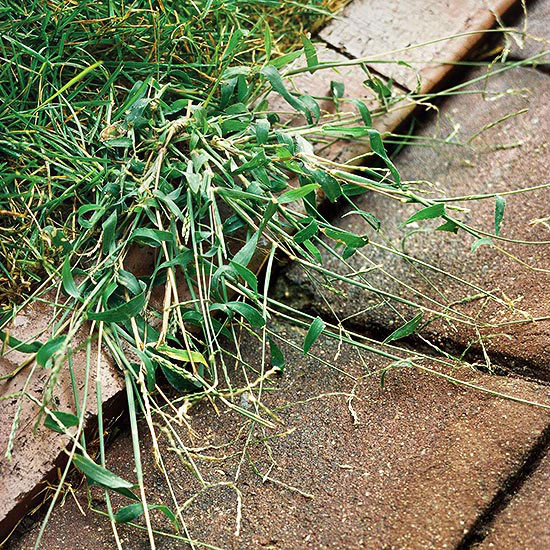






Product packages usually provide a general guide to application timing. For example, they'll tell you approximately when you need to apply a crabgrass preventer. However, regional and year-to-year weather variations can make correct timing tricky. Fortunately, there are some easy ways to time your applications to get the most out of them.
The best-known method is to time crabgrass preventers for your lawn according to forsythia bloom. This popular landscape shrub is grown for its striking yellow bloom in early spring. When most trees and shrubs are still bare, you can't miss forsythia when it flowers. When the blossoms start to drop to the ground, it's time to put down the crabgrass preventer.
For garden beds, the timing depends on the primary target weed. If you are dealing with cool season weeds, such as henbit or chickweed, then apply a garden weed preventer as soon as soil can be worked in spring. However, summer weeds like crabgrass, foxtail, or spurge are your bane (as they are for most gardeners) time the application with forsythia bloom, as you would do with a lawn application.
Resist the urge to apply too soon; weed preventers have a limited life span in soil, and the sooner you apply them, the sooner they wear out. 8-12 weeks is the typical length of effectiveness.
How to Apply Weed Preventer
Most residential weed preventers are granular products, meaning that you apply them with a spreader. It's important to apply at the rate stated on the product package. Also, granular products usually don't work well unless they're watered in with a half-inch or so of water. If no rain is expected in the week or so after application, consider irrigating to activate the weed preventer.
What to Apply to Prevent Weeds
For lawns, there are several synthetic weed preventers that work well, and are sold under recognized brand names such as Bayer, Scotts, and many others. These are typically combined with fertilizer so that both can be applied at once, saving you a separate application for fertilizer. For garden beds, these products often are sold strictly as weed preventers (i.e. no fertilizer is included). Preen is one widely used brand for garden beds.
An organic weed preventer option is corn gluten, which is nearly as effective as conventional products. Many brands of synthetic weed preventers also have corn gluten weed preventers in their product lines.
Precautions
Weed preventers stop seeds from germinating. That means you should not apply them anywhere you want to plant flower seeds during the following 3 months, or in lawns where you've just reseeded (or plan to). However, you can use weed preventers in spring and plant seed in fall without any trouble.
Remember that weed preventers don't kill weeds that are already growing. Perennial weeds such as wiregrass, dandelions and many others will return each year unless you physically remove them or spray with a herbicide such as glyphosate (Roundup).
Copyright © www.100flowers.win Botanic Garden All Rights Reserved